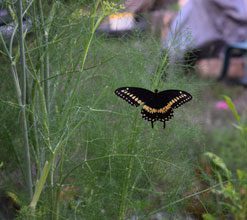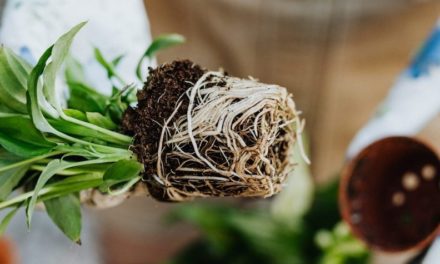 What a joy to grow plants with attractive foliage, flowers and fruit, but doubly useful to grow those plants as food! Ornamentals are just good looking, but if they can be baked in a pie or eaten in a salad, all the better.
What a joy to grow plants with attractive foliage, flowers and fruit, but doubly useful to grow those plants as food! Ornamentals are just good looking, but if they can be baked in a pie or eaten in a salad, all the better.
We take for granted the process that light energy travels 93 million miles to our planet, is absorbed by chlorophyll molecules, and converts carbon dioxide (gas) and water (liquid) into sugar (carbohydrate). Plants make their own food, are eaten by creatures small and large, broken down, and digested by bacteria, fungi, other microbes, invertebrates, and vertebrates.
Some plant parts can be eaten raw – as fruit, or in a salad. Various roots, leaves, flowers, buds, fruits, stems, grains, nuts, or tubers can be roasted, cooked, made into jams, pies, flours, pickles, soups, and stews. Cooking oils, teas, seasoning and syrups can also be added to recipes. In the South Carolina Lowcountry we can grow a cornucopia of plants that will feed us, sustain wildlife, and be beautiful. What are they? How do they grow? Where can I find them?
Garden centers, hardware and farm stores are bursting with herb and vegetable plants right now. Garden magazines and home gardening shows have wonderful articles and programs on what, where, and how to grow edible landscaping. The Clemson Home and Garden Information website has a very extensive fact sheet on “Planning a Garden.” We can grow vegetable, fruit trees, vines, and shrubs in large areas and dedicated garden plots. For those with small apartments or conventional landscaping, containers and trellises are useful to augment a lack of space.
Most vegetables need at least six hours of full sun to grow, flower or fruit. Garden soil needs to be well drained and have good texture like that found in most of our flowerbeds or borders. Adding edibles in flowerbeds will give texture, color, and tastiness to your garden. In the fall many of us use ornamental cabbages, kale, Swiss chard, and mustard. There are so many great varieties of these, like “Bright Lights” chard, Red Russian Kale, and Giant red mustard, that can be used instead. Sweet potato can be grown as a ground cover and the tubers harvested in late summer or fall. One very dramatic plant is the globe artichoke which not only has very attractive flowers and the delicious green or purple bracts and hearts. Herbs are great to add as fillers or groundcovers in containers and borders. Parsley, basil, dill and rosemary are sold in many varieties, flavors, and colors; all of these stand up well in full sun, well drained soils. There is a rainbow assortment of sizes, colors and types of peppers, tomatoes, and eggplants, and these can liven up any sunny foundation planting or patio. Okra is a member of the Mallow family and has gorgeous creamy flowers with dark centers. The red or green pods are best picked young, but the dried fruit is fun to use in fall wreaths and arrangements.
Plant fruits and nuts as shade trees, hedges, and focal points in the landscape. Blueberry bushes can live a long time and have wonderful early blooms and fall color besides having a fruit that is thorn less and good for snacking, freezing, drying, and cooking. Elderberry, tall and thornless, has been used for generations to make jelly, wine and fritters. Many of the native trees like persimmon, crabapple and plum can be used for muffins, pies and jam. These are important food for wildlife as well.
Another source of interesting unusual varieties of edible garden plants are seed catalogues. Seeds from these catalogues include ‘Moon and Stars’ watermelon and rainbow carrots.
So many plants to eat; why grow just pretty?
For more information, visit one of these sites:








